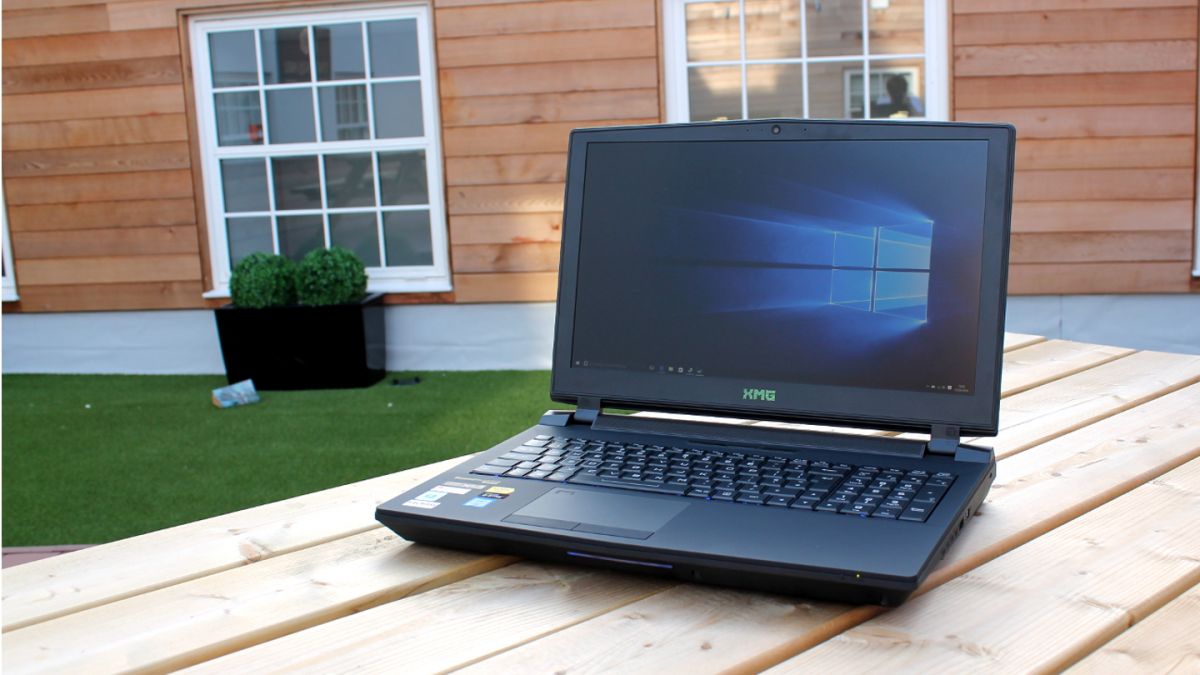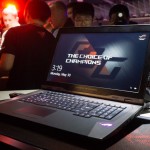
Introduction
Nvidia’s new Pascal GPUs have made their way into at least 10 gorgeous (and incredibly powerful) gaming laptops, with more to come. In addition to letting you dip your toes into 4K gaming, VR and super-smooth triple-digit frame rates, the company’s new architecture promises to make real difference to your gaming playtime thanks to improvements around energy consumption and power efficiency.
Nvidia claims that its new Pascal-powered GTX 10-Series GPUs for notebooks can reach up to twice the battery life of its previous Maxwell-equipped models. Kaustubh Sanghani, general manager of PC platforms at Nvidia, says that this was a huge undertaking that saw thousands of engineers to try tackle issues around battery life and power consumption.
The task, he says, was particularly challenging when it came to slim new chassis designs that have less physical space for components. TechRadar spoke to Sanghani at the launch of Nvidia’s GTX 10-Series notebooks to find out more.
TR: How does Pascal help lower energy consumption and increase efficiency in gaming laptops?
Kautsubh Sanghani: Pascal was a huge undertaking for Nvidia. Thousands of engineers worked on it for more than two years, and it cost several billion dollars of R&D investment. We did a lot of initiatives with Pascal to reduce power consumption and increase efficiency.
Our CEO refers to this as craftsmanship – it’s a thousand little things and a few big things, and a couple of earth-shattering things that we put together when we do a new architecture. Some of the benefits come from the 16nm FinFET process, where power consumption is reduced and power efficiency is improved, but we do a lot more than that.
There are a large number of architectural improvements that have improved the power efficiency of Pascal to deliver something over Maxwell, which is already the world’s most power-efficient architecture. This really comes to use when you put it into a notebook, as the notebook is the most demanding customer for these GPUs, in a manner of speaking.
That’s because the form factor requires you to be able to deliver great performance in a very constrained power and size envelope. To solve these problems together required a lot of craftsmanship from the engineering team at Nvidia, and that’s what’s so exciting about bringing Pascal GPUs to notebooks.
TR: Nvidia has said that for a long time it wanted to make gaming laptops equally as powerful as desktops, but has only just been able to do that. Why has it taken so long?
KS: Power efficiency was one of the biggest barriers. As we improved power efficiency with every architecture we got a little bit closer, but it took all the advancements of Pascal to finally get there and bring new GPUs with no ‘M’ branding to the notebook form factor. The constraint of the power envelope is one challenge, then there’s the constraint of size.
If you look at some of the new 15-inch Pascal notebooks, when you look at the insides, around half of them are just the battery. Then the motherboard and other elements have to fit in the other half, which includes the CPU and the GPU and the system memory and the hard disk or SSD. That means that, at the end of the day, the amount of space you have for the GPU and the frame of the memory is rather small.
TR: How is having a small laptop chassis a challenge on an engineering level?
KS: The new G5X memory in Pascal notebooks runs at 10 gigabits-per-second. When you run a signal at that speed, the window of the signal in which it has to be be sampled is only one-hundred picoseconds wide. When you try to visualise what one-hundred picoseconds is, it’s the amount of time it takes for light to travel an inch. So in that amount of time, you need to sample this signal.
To do that with an add-in card is extremely complex, and a notebook is even more reduced in size. As you reduce size there’s a lot more crosstalk and noise and things that complicate the problem. We had to solve those challenges to get that level of performance in a notebook.
TR: What thermal design considerations will OEMs have to take into consideration when designing new Pascal notebooks?
KS: In terms of heat and power consumption, the Pascal GPUs are somewhat equivalent to the Maxwell GPUs that they are replacing even though they deliver a lot more performance at those power levels. There are a lot of new things that they are required to do in terms of heat dissipation and power consumption.
All our OEM partners are pushing innovation in their own ways and are coming up with innovative ways to do thermal power designs. We tackled the electrical side in a way that allowed us to do overclocking much better than before, delivering better power efficiency and density, higher peak power and cleaner power with a lot less noise. That was all included in our reference design and a lot of our OEM partners have decided to include it.

TR: How does Pascal help improve battery life in gaming notebooks?
KS: If you did an apples-to-apples comparison on the same game at the same settings, Pascal GPUs can deliver up to 30 percent more battery life. When you think about it, that’s 30 percent more battery life at the system level. The GPU is one of the things that consumes power at the system level, among others, so 30 percent is a big bump up.
We also have our battery boost technology which allows users to make the choice between picking what frame rate they want to run at while keeping it consistent. We have made improvements to battery boost to make it smoother than ever before.
TR: How do the clock speeds in the notebook versions of the Pascal cards differ to the desktop versions?
KS: The notebook versions are different SKUs compared to the desktop ones. The changes are minor, so you won’t see any big changes. We’ve done what we set out to do, which was to bring the full experience of the GPU to the notebook. But because notebooks are different, there are minor changes.
When you look at the base and boost clock speeds there are slight differences, and when you look at the 1070, for example, it has a few more cores but slightly lower clocks. So those are the sorts of minor optimizations we had to do to get the GPUs into optimal notebook form factors.
TR: What will the new Pascal GPUs allow gamers to do that Maxwell-based ones couldn’t?
KS: We thought about generation improvement on gaming notebooks, which is already the fastest-growing gaming platform in the world. Bringing Pascal to it is going to transform that system. A 75 percent generational improvement is the largest gen-to-gen improvement we’ve ever had in the notebook.
That means that now all these 1060, 1070 and 1080 notebooks today are VR-ready. To buy a VR-ready notebook previously, it had to be a large notebook and there were very few of them – and they cost around $2,500. Today we’re seeing VR-ready notebooks that are as thin as 18mm and as light as 4 pounds, and we’re going to see millions of them.
TR: Other than increased power, what are some of the new features we will see on GTX 10- Series laptops?
KS: Gamers can enjoy popular games at 120Hz for the first time, as many of the notebooks have 120Hz panels. GPUs are powerful enough to run them at 120 frames or more to have extremely smooth gaming. If you choose, you can run them at 4K and at 60Hz instead. You could run games on a 4K panel or monitor, or use DSR and render it at 4K and enjoy it on a low-resolution panel. All of these things could not be done on a notebook before but finally can due to Pascal.
TR: Why is Nvidia advising gamers not to play VR games on these new laptops?
KS: That boils down to the chemistry of the batteries that goes into these laptops. The chemistry of these batteries limit the amount of current that they can supply. Based on that, we don’t classify these laptops in battery mode as being VR ready – they’re only VR-ready when plugged in. Of course, that’s kind of a statement on the battery rather than everything else – until you can replace that with another battery that’s larger – but that’s not what most laptops use. But if you did that, they would be VR-ready.
Source: techradar.com









































